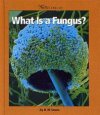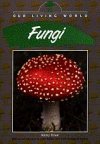Fungus Hunt Additional Information
An introduction to families of organisms that belong to the fungi kingdom can be found at www.perspective.com/nature/fungi/ (Ari Kornfeld). Information about fungi is available at www.ucmp.berkeley.edu/fungi/fungi.html (University of California, Berkeley) and www.mykoweb.com/(Michael Wood, MykoWeb).
You can learn more about edible and poisonous mushrooms at www.conservation.state.mo.us/nathis/mushrooms/mushroom/ (Conservation Commission of Missouri).
To see photos of fungi from all over the world, go to www.fungiphoto.com/DfltA.html(Taylor Lockwood).
To learn more about diseases caused by fungi, see www.doctorfungus.org/ (Doctor Fungus).
An explanation of how fungi are classified and identified is available at www.anbg.gov.au/fungi/classification-identification.html#Classification (Australian National Botanic Garden).
Mind-Boggling Facts about Mushrooms
www.ars.usda.gov/is/kids/farm/story4/mushroomfacts.htm
U.S. Department of Agriculture
Fun Facts about Fungi
herbarium.usu.edu/fungi/FunFacts/factindx.htm
Robert Fogel and Patricia Rogers, University of Michigan
The Bell Museum of Natural History in Minneapolis has a Web site at www.bellmuseum.org/(University of Minnesota).
Books recommended by SearchIt!Science:
 |
What Is a Fungus? — Dorothy M. Souza
Published by Franklin Watts/Scholastic, 2002.
Indoors or outdoors, millions of tiny organisms exist in all corners of our lives. Most fungi live in dark, moist places, but some live in very cold or very hot environments. Learn about four different types of fungi, and explore some species in each category. Find out how a fungus lives, what it eats, and how it reproduces. With colorful photos, take a look at poisonous fungi and edible fungi, learn about fungi that live symbiotically with other organisms, and discover which fungi can save lives. |
 |
Fungi — Jenny Tesar
Published by Blackbirch Press/Gale Group, 1994.
They can be as small as a tiny speck or as big as sheep. They can look like crusts or slimy jelly. They live all over the earth and affect the living things around them in different ways. Fungi are organisms that are neither plant nor animal but can show features of both. From the everyday mushroom to the bizarre scrambled-egg slime, you’ll be treated to a complete look at this family of organisms. Through color photographs and drawings, you’ll see the way they grow and reproduce, how they use their senses, how they get and digest food, and how they fit into the web of life. Boxes give an up-close view of some of the features of fungi and the ways that fungi affect people. Unusual facts are sprinkled through the margin in “Did You Know” sections. |
 |
Slime, Molds and Fungi — Elaine Pascoe
Published by Blackbirch Press/Gale Group, 1998.
What time is it? It’s slime time! Be prepared for the many phases and faces of slime. It might be hairy, gooey, green, or yellow! Graphic close-up photographs show you more than you might care to see. This book even offers directions on how to make your own decay. It includes ways to buy your own mushroom growing kits. |
Power Words
fungus A member of a kingdom of living things that produce offspring by means of
spores. Most fungi get their nutrients by feeding off other living organisms or dead plants and animals. Mushrooms, molds, yeasts, and mildews are all fungi. Plural form: fungi.
mushroom A type of fast-growing fungus with a stalk that is topped by a soft cap, often in the shape of an umbrella. Some mushrooms are edible, but others are poisonous.
spore 1. A single cell that can grow into a new living thing without being fertilized by another cell. Fungi, algae, some protozoans, and plants that do not bear seeds reproduce by means of spores. 2. A form of some bacteria that can become active after a long period of being inactive. Bacteria become spores as a way of surviving extreme conditions, such as dryness and cold.
Copyright © 2002, 2003 Houghton-Mifflin Company. All rights reserved. Used with permission.
